#frank demarest
Explore tagged Tumblr posts
Text
That Darn Cat
That Darn Cat is a truly entertaining Disney family film, from its heyday. A woman is kidnapped, a cat may be the vital clue, the FBI is unsure, so a young teenage girl will prod them … Continue reading That Darn Cat
#1965#Dean Jones#Dorothy Provine#Ed Wynn#Elsa Lanchester#Frank Gorshin#Grayson Hall#Hayley Mills#Neville Brand#Richard Deacon#Roddy McDowall#William Demarest
0 notes
Photo
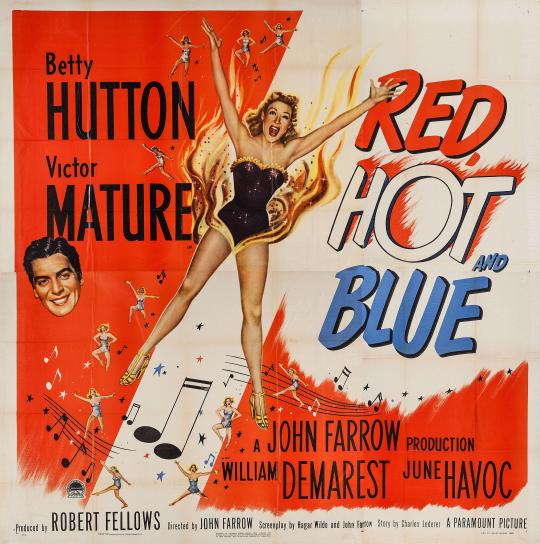
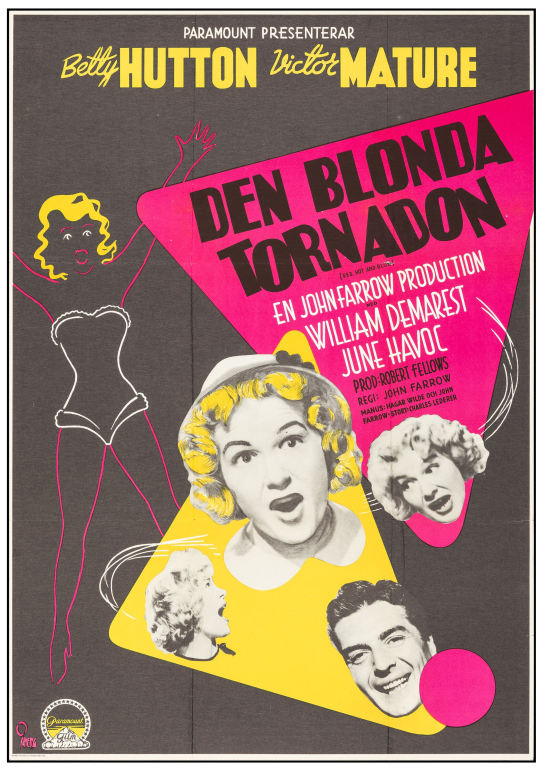
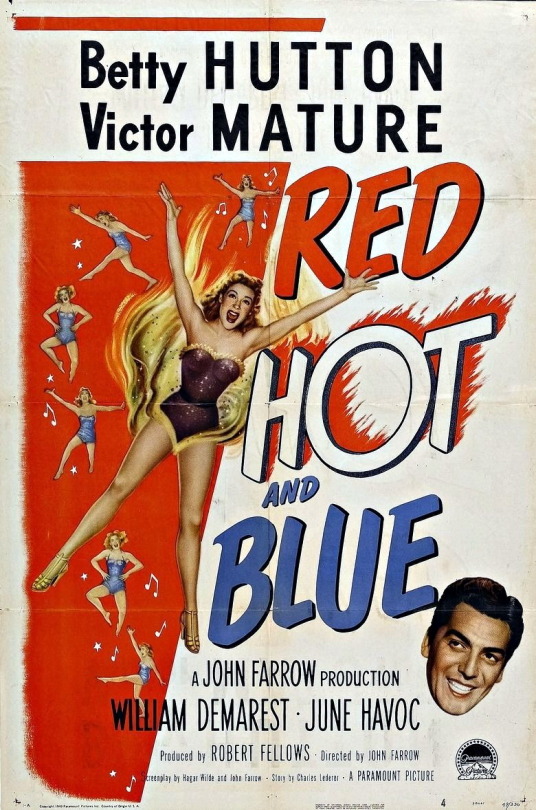
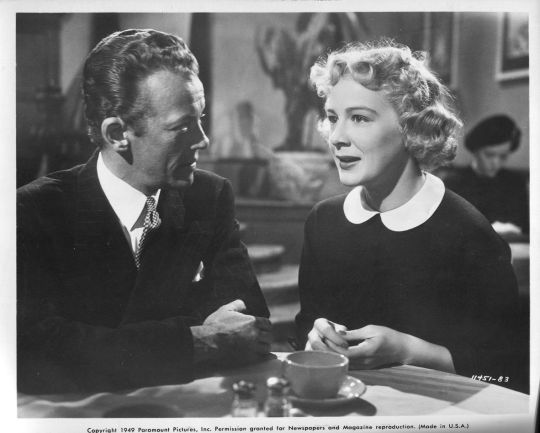
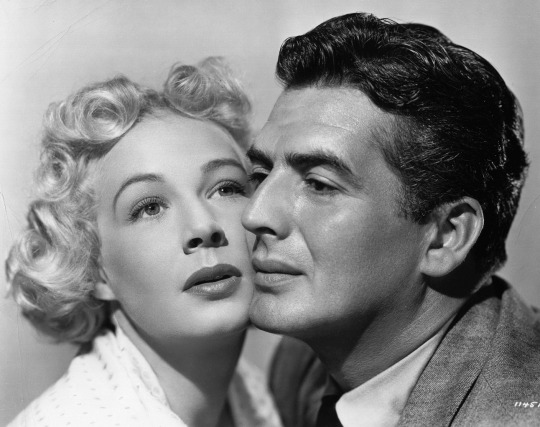
Red Hot and Blue (Red, Hot and Blue) (1949) John Farrow
May 7th 2023
#red hot and blue#1949#john farrow#betty hutton#victor mature#william demarest#june havoc#william talman#jane nigh#frank loesser#art smith#restless angel#the broadway story
1 note
·
View note
Text
A movie rec to lift the spirits
youtube
For anyone who needs to laugh at a Nazi today, have Conrad Veidt being amazingly OTT and Bogart showing how to deal with the jackbooted little pricks (and their little dogs too)
This movie is a bit of classic Hollywood comedic madness, cleverly subverting the wisecracking criminal roles that Bogart frequently played before Casablanca and putting him in service of the WWII propaganda effort (set and filmed not long before the Americans got into the war, and released less than two months after they joined in). Apart from a stereotypical Black servant role for the wonderful Sam McDaniel (since this was filmed before FDR's wartime directive to the film industry to stop making the US look as fucking racist as it was - compare McDaniel's part to the bit parts for the two Black actors in Christmas in Connecticut if you want to see the effect of that policy), the supporting characters are all brilliantly written and performed, from William Demarest's smartass Sunshine to Jane Darwell's turn as Bogart's crime-fighting mother. Peter Lorre, Veidt and Judith Anderson are perfect as a trio of dastardly Nazi spies trying to organize a fifth column in New York City, and there's a shedload of Warner Brothers talent in Bogart's crew, including Frank McHugh and Barton MacLane, and later TV stars Jackie Gleason and Phil Silvers. The premise that a sampling of the Big Apple's dodgier characters are smarter and tougher and better than the best the Third Reich has to offer is a wonderfully American message, especially since largely working class NYC antifascists had been doing battle with the fash for years by this point. It's basically Damon Runyon meets Nazi Germany and kicks its ass with gusto.





#classic film#all through the night#actually a fucking hilarious movie#humphrey bogart#conrad veidt#Youtube
17 notes
·
View notes
Text


CALIFICACIÓN PERSONAL: 6.5 / 10
Título Original: Frank Miller's Sin City: A Dame to Kill For
Año: 2014
Duración: 102 min
País: Estados Unidos
Dirección: Robert Rodriguez, Frank Miller
Guion: Frank Miller Cómic: Frank Miller
Música: Robert Rodriguez, Carl Thiel
Fotografía: Robert Rodriguez (B&W)
Reparto: Mickey Rourke, Josh Brolin, Jessica Alba, Joseph Gordon-Levitt, Eva Green, etc
Productora: The Weinstein Company, Dimension Films, Aldamisa Entertainment, Demarest Films, Miramax, Solipsist Film, Troublemaker Studios
Género: Action; Crime; Thriller
TRAILER:
youtube
0 notes
Text

The new episode of Crossroads of Rockland History is streaming now!
Listen here:
Broadcast originally aired 10/16/23.
Frank Eberling and his brother Ray Eberling, New City natives, joined host Clare Sheridan for a discussion about the early days of New City and the wagon that their grand father used to carry mail on New City’s Rural Free Delivery routes at the turn of the 20th century.
Since the 1970s, when it was donated to our collection by the late Dr. Anthony Pavia, D.C., of New City, the HSRC has had in our possession this horse-drawn wagon. Ray and Frank are now working with the HSRC to restore it for display at the History Center in New City.
About the guests: Ray Eberling is a retired US Air Force lieutenant-colonel who holds a master’s in American studies from the University of Heidelberg (Germany) and has volunteered for many years with the University of Florida’s Samuel Proctor Oral History Program. Frank Eberling has been a filmmaker in South Florida for fifty years, producing more than 3,000 film and television broadcast projects as producer, writer, director, or cinematographer. He is also the author of the New City-based mystery novels Low Tor, Demarest Kill, and Jimmy Van Meter’s Last Refrain.
Ray and Frank Eberling will be visiting the HSRC with a presentation on this project: “The Eberling Mail Wagon: Rural Free Delivery in New City in the Early 20th Century,” on Thursday, October 26, 2023, 7 pm, at the Historical Society of Rockland County. Admission is $FREE, but reservations are required. Donations toward restoration of the mail wagon are gratefully accepted.
For details and ticket link: https://www.eventbrite.com/e/the-eberling-mail-wagon-rural-free-delivery-in-new-city-tickets-706048328557?utm_experiment=test_share_listing&aff=ebdsshios
Frank Eberling will also be appearing at the New City Library on Monday, October 23, 7 pm, to speak about New City-inspired fiction. This is an in-person and virtual presentation. Reserve your spot for that event at link below
https://newcity.librarycalendar.com.
***
If you aren’t local, you can still listen to Crossroads of Rockland History by downloading the TuneIn radio app and searching for WRCR. After the broadcast, the program can be streamed as a podcast on all major podcast platforms.
#newcity #localhistory #eberling #usps #mailwagon
0 notes
Text
Round 1 Results
Jesse White vs Joe Besser
Ed Wynn vs Broderick Crawford
Halliwell Hobbes vs Lionel Barrymore
Charlie Ruggles vs Ernest Thesiger
Frank Morgan vs Frank Jenks - tie
Betty Garrett vs Rags Ragland
Josephine Hull vs Mischa Auer
S.Z. Sakall vs Tom Dugan
Patsy Kelly vs Al St. John
Margaret Hamilton vs Edward Everett Horton
Nella Walker vs Hans Conried
Hattie McDaniel vs Billy Gilbert
Thurston Hall vs Leonid Kinskey
Marjorie White vs Eve Arden
Edward van Sloan vs Jack Oakie - tie
Charles Winninger vs Butterfly McQueen
Alan Mowbray vs Zasu Pitts
Charlotte Greenwood vs Henry Armetta
Marjorie Main vs Pat Buttram
William Demarest vs Bert Lahr
Marie Dressler vs Beulah Bondi
Una O'Connor vs Martha Raye
Dwight Frye vs Charles Coburn
Ned Sparks vs Esther Muir
Thelma Todd vs Elisha Cook Jr.
Christian Rub vs Samuel S. Hinds
Doodles Weaver vs Gail Patrick
Sydney Greenstreet vs Alice Brady
Roland Young vs John Carradine
James Gleason vs Verna Felton
Una Merkel vs Eugene Pallette
Willie Best vs Conrad Veidt
Maude Eburn vs Scatman Crothers
Guy Kibbee vs Walter Brennan - tie
Nat Pendleton vs Clarence Kolb
Jane Darwell vs Raymond Massey
Erich von Stroheim vs Barry Fitzgerald
Eddie "Rochester" Anderson vs Jack Carson
El Brendel vs Reginald Gardiner
Joseph Calleia vs Warren Hymer
Walter Slezak vs Sam Levene
Edna May Oliver vs Richard Lane
C. Aubrey Smith vs Charles Laughton
Gabby Hayes vs Red Buttons
Franklin Pangborn vs Elsa Lanchester
Lionel Atwill vs Martha Mattox
Bill Robinson vs Jessie Ralph
Andy Devine vs Harry Davenport
Richard Carle vs Ernest Truex
Edward Arnold vs Herman Bing
Cliff Edwards vs Sterling Holloway
George Zucco vs Nancy Kulp
Warner Oland vs Jean Adair
Gregory Ratoff vs Grady Sutton
Helen Broderick vs Glenda Farrell
Lillian Yarbo vs Arthur Edmund Carewe
Marjorie Gateson vs Hugh Herbert
Phil Silvers vs Joy Hodges
Ray Bolger vs George E. Stone
George Davis vs Donald Meek
Warner Baxter vs Jerry Colonna - tie
Spring Byington vs Stuart Erwin
Felix Bressart vs Angelo Rossitto
Eric Blore vs Billy Barty
1 note
·
View note
Photo

Bad movie I have Sullivan’s Travels 1941
#Sullivan’s Travels#Paramount Pictures#Joel McCrea#Veronica Lake#Robert Warwick#William Demarest#Franklin Pangborn#Porter Hall#Byron Foulger#Margaret Hayes#Robert Greig#Eric Blore#Torben Meyer#Victor Potel#Richard Webb#Charles R. Moore#Almira Sessions#Esther Howard#Frank Moran#Georges Renavent#Harry Rosenthal#Al Bridge#Jimmy Conlin#Jane Buckingham#Robert Winkler#Chick Collins#Jimmie Dundee
5 notes
·
View notes
Text
Whispering Smith 1948

#whispering smith#alan ladd#robert preston#brenda marshall#donald crisp#william demarest#murvyn vye#frank faylen#john eldridge#ward wood#will wright#j farrell macdonald#eddy waller#don barclay#ray teal#ashley cowan#jimmie dundee#bob kortman#eric alden#irving bacon#george barton#hank bell#frank hagney#terry frost#earle hodgins#hank worden#tex taylor#ethan laidlaw#jack kenny#gary gray
12 notes
·
View notes
Text
"WHISPERING SMITH" (1948) Review

"WHISPERING SMITH" (1948) Review For years, I had assumed that Alan Ladd starred in only three Westerns - one of them being the acclaimed 1953 movie, "SHANE". Yet, while perusing his filmography, I discovered that he had either starred or co-starred in a good number of "oaters". One of them was the 1948 film, "WHISPERING SMITH".
Based upon Frank H. Spearman's 1906 novel, "WHISPERING SMITH" told the story of a railroad detective named Luke "Whispering" Smith who is assigned to investigate a series of train robberies in late 19th century Wyoming Territory. However, the case becomes personal for Luke when his oldest friend, a local rancher and railroad employee named Murray Sinclair becomes involved with the gang responsible for the robberies. Superficially, "WHISPERING SMITH" seemed like the typical Western made by Hollywood studios during the studio era. If I have to be honest with myself, Westerns with any real depth seemed rare to me during the so-called "Golden Age of Hollywood" and now. I seriously doubt that any movie critic would regard "WHISPERING SMITH" as something unique. The movie possessed traits one could easily find in mediocre Westerns and a few really good ones: *Outlaw gang robbing either locals or businesses that dominate the neighborhood *Corrupt local businessman or rancher leading the outlaws *Rancher or businessman's main henchman, who happens to be a proficient killer *Lawman assigned to hunt down outlaws *Posse chases outlaw around neighborhood/county Yes, "WHISPERING SMITH" possessed these traits. It also possessed a first-rate dramatic narrative that elevated the movie from the usual Western tropes - namely the love triangle between Luke Smith, his best friend Murray Sinclair and Murray's wife Miriam Sinclair. This triangle was set five years in the past when Miriam, frustrated by Luke's reluctance to propose marriage to her, married Murray. The latter never realized that Luke and Miriam still harbored lingering romantic feelings toward each other . . . until the film's midway point. Between his resentment toward Luke and Miriam, and being fired by his railroad boss George St. Cloud - whom he disliked - Murray made a choice that proved to be disastrous for his marriage and his friendship with Luke. The developing estrangement between Luke and Murray also proved to be difficult for the former as well. This was especially apparent in the film's second half of the film. Due to his close friendship with Murray; Luke not only struggled and failed to save the other man's job, but also convince the latter to give up his new alliance with the main villain, rancher Barney Rebstock. "WHISPERING SMITH" not only benefited from this complex narrative regarding the Luke-Miriam-Murray relationship, but also the fine performances from its cast. Once again, Alan Ladd proved he was a better actor than many believed he was in his performance of the leading character, Luke Smith. What made Ladd's performance first-rate his ability to not only convey Luke's contrasting personality traits - soft-spoken, yet friendly demeanor and an intelligent ruthlessness - but also his varying array of emotions with a fluidity that still impress me to this day. Another superb performance came from Robert Preston, who portrayed Luke's best friend Murray Sinclair. Superficially, Murray came off as a one-note personality. But thanks to Preston's performance, Murray proved to a complicated character that transformed from a genial, yet sometimes pushy man to an embittered one, who had allowed his bullheadedness and temper to lead him to a bad choice. Brenda Marshall's portrayal of Miriam Sinclair also struck me as equally impressive. Her Miriam proved to be an emotional and complicated woman, who struggled to repress her lingering feelings for Luke and determined to save Murray and her marriage. Marshall conveyed these aspects of Miriam's emotional state in two excellent scenes. One of them featured her never ending frustration and resentment toward Luke's failure to propose marriage all those years ago. And other featured a quarrel between Miriam and Murray in which she finally convinced him to sell their ranch and move away from the neighborhood . . . and Barney Rebstock's orbit. There were other performances I enjoyed. One of them came from William Demarest, who gave an emotional, yet satisfying portrayal of Bill Dansing, a railroad employee who had been friends of Luke and Murray for years and served as their father figure. Donald Crisp gave an amusing and entertaining performance as Barney Rebstock, the rancher who hid his criminal and ruthless behavior behind a genial mask. Another came from John Eldredge, whose portrayal of George McCloud, the railroad official who clashed with Murray, struck me as subtle and intelligent. I also enjoyed the solid performances from the likes of Fay Holden, Murray Vye, Ward Wood and Will Wright. I have to say a word about Ray Rennahan's cinematography. What can I say? I thought it was beautiful looking. Rennahan, who had won an Academy Award for his work in 1939's "GONE WITH THE WIND", also shot "WHISPERING SMITH" in Technicolor. I have seen other films shot in Technicolor that struck me as rather garish. I cannot say the same about "WHISPERING SMITH". I found the photography sharp and colorful, without being garish, as shown in the image below:

Although I found myself impressed by the narrative regarding Luke's relationship with the Sinclairs, I cannot disregard some of the film's action sequences. There were two that really impressed me. One proved to the final sequence that featured the posse chasing Murray, Rebstock and the latter's gang around the countryside following a train robbery. Sure, I thought it was an unoriginal trope to use in a Western. But I thought it was exciting and well shot by director Leslie Fenton. However, I was more impressed by Fenton's work in the sequence that featured Luke's encounter with the Barton boys - members of Rebstock's gang - at a rail junction in the rain. It featured good action, good acting and great editing by Archie Marshek. As much as I enjoyed "WHISPERING SMITH", there are some aspects of it that I found unappealing. One of them proved to be actor Frank Faylen's portrayal of henchman Whitey DuSang. I realize that Faylen was a first-rate actor. I have seen him in other productions. But . . . I found his portrayal of DuSang rather one-dimensional. Faylen spent most of the film hovering around Donald Crisp with his arms folded and staring at people with squinting eyes. If this was his way of looking intimidating, I did not buy it. I do know whether to blame Faylen, the director Fenton, screenwriters Frank Butler and Karl Kamb or Frank Spearman's portrayal of the character in his novel. Another major problem I had with "WHISPERING SMITH" proved to be Mary Kay Dodson's costume designs for the female characters. Exactly what was this film's setting? Some of Dodson's costumes seemed to indicate the 1880s. And some of her costumes - especially for Brenda Marshall - seemed to indicate the 1890s. Nor did it help that the women's hairstyles seemed to reflect the late 1940s. Despite my quibbles with Frank Faylen and Mary Kay Dodson's costume designs, I enjoyed "WHISPERING SMITH" very much. Not only does it happen to be one of my favorite films starring Alan Ladd, I actually like it more than his more famous film, "SHANE". I am certain that many would find this sacrilegious. However, thanks to Leslie Fenton's direction, a screenplay that conveyed a complex love triangle and excellent performances from a cast led by Ladd, Robert Preston and Brenda Marshall; I cannot help how I feel.

#whispering smith#whispering smith 1948#frank h. spearman#leslie fenton#alan ladd#robert preston#brenda marshall#william demarest
1 note
·
View note
Photo
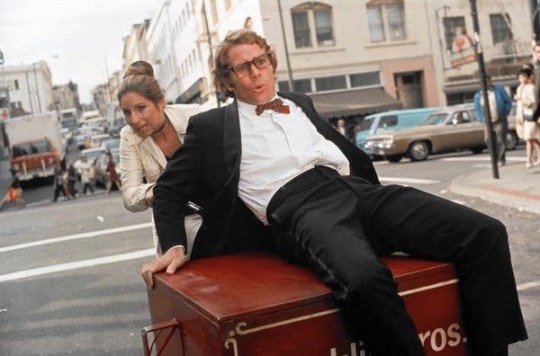
Barbra Streisand and Ryan O'Neal in What's Up, Doc? (Peter Bogdanovich, 1972)
Cast: Barbra Streisand, Ryan O’Neal, Madeline Kahn, Kenneth Mars, Austin Pendleton, Michael Murphy. Screenplay: Buck Henry, David Newman, Robert Benton, Peter Bogdanovich. Cinematography: László Kovács. Production design: Polly Platt. Film editing: Verna Fields. Music: Artie Butler.
Peter Bodganovich's What's Up, Doc? is a tribute to the masters of screwball comedy, Howard Hawks and Preston Sturges especially, but also the ones who made worthy contributions like Gregory La Cava, George Stevens, Mitchell Leisen, and Frank Capra. Bogdanovich followed a few of the rules of the genre: One, get stars who usually played it straight to make fools of themselves. Two, make use of as many comic character actors as you can stuff into the film. Three, never pretend that the world the film is taking place in is the "real world." Four, never, ever let the pace slacken -- if your characters have to kiss or confess, make it snappy. On the first point, Bogdanovich found the closest equivalents to Cary Grant and Katharine Hepburn (or Clark Gable, Joel McCrea, James Stewart on the one hand, Rosalind Russell, Claudette Colbert, Jean Arthur on the other) that he could among the stars of his day. Ryan O'Neal was coming off the huge success of the weepy Love Story (Arthur Hiller, 1970) and a five-year run on TV's Peyton Place, and Barbra Streisand had won an Oscar for Funny Girl (William Wyler, 1968). O'Neal is no Cary Grant: His timing is a little off and he overdoes a single exasperated look, but he makes a suitable patsy. But has Streisand ever been more likable in the movies? She plays the dizzy troublemaker with relish, capturing the essence of Bugs Bunny -- the other inspiration for the movie -- to the point that you almost expect her to turn to the camera and say, "Ain't I a stinker?" As to the second point, we no longer have character actors of the caliber of Eugene Pallette, Franklin Pangborn, or William Demarest, but Bogdanovich recruited some of the best of his day: Kenneth Mars, Austin Pendleton, Michael Murphy, and others, and introduced moviegoers to the sublime Madeline Kahn. And he set it all in the ever-picturesque San Francisco, while making sure no one would confuse the movie version with the real thing, including a chase sequence up and down its hills that follows no possible real-world path. And he kept the pace up with gags involving bit players: the pizza maker so distracted by Streisand that he spins his dough up to the ceiling, the banner-hanger and the guys moving a sheet of glass, the waiter who enters a room with a tray of drinks but takes one look at the chaos there and turns right around, the guy laying a cement sidewalk that's run over so many times by the car chase that he flings down his trowel and jumps up and down on his mutilated handiwork. This is comic gold of a sort we don't often see -- and, sadly, never saw again from Bogdanovich, whose career collapsed disastrously with a string of flops in the mid-1970s.
14 notes
·
View notes
Text
MY THREE SONS at 60!
September 29, 1960

“My Three Sons” was a situation comedy produced at Desilu Studios. It premiered on ABC TV on September 29, 1960 and finished its first run on April 13, 1972, with 380 episodes making it the second-longest running live-action sitcom in TV history after “The Adventures of Ozzie and Harriett” (1952-66).

Seasons 1 through 5 were aired in black and white on CBS. In 1965 it moved to CBS when ABC declined to underwrite the costs of airing in color. The series was initially filmed at Desilu Studios in Hollywood, but at the start of the 1967–68 season, the cast and crew began filming the series at the CBS Studio Center in Studio City, California due to Lucille Ball’s sale of Desilu to Gulf + Western, which owned Paramount Pictures. The sale also affected the filming location of another family sitcom, “Family Affair.”
Incredibly, “My Three Sons” ran concurrently through both “The Lucy Show” and “Here’s Lucy.” Both Steve Douglas and Lucy Carmichael (and later Carter), where single parents raising children.
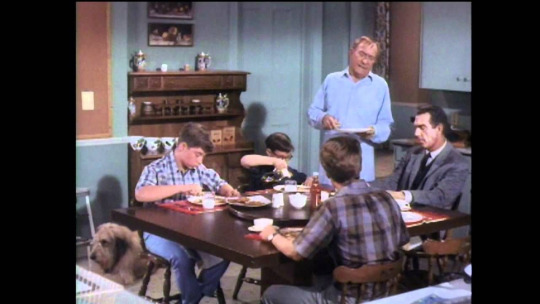
September 16, 1965 was a big night for CBS airing the very first episode of “My Three Sons” after moving from ABC titled “The First Marriage”. It was also the first episode of the series broadcast in color, something “The Lucy Show” did three days earlier with “Lucy at Marineland” (TLS S4;E1). The premise of the series is a widowed father (Steven Douglas) raising his three boys with help of his extended family. Initially, the three sons were Chip, Robbie, and Mike, but in 1967 Mike was written out and replaced by Ernie, whom Steve adopted. The extended family at first consisted of Bub, Steve’s father-in-law and the boys’ maternal grandfather, but in 1964, that character was replaced by Uncle Charley, Steve’s uncle and Bub’s brother.

The leading role was played by film star Fred MacMurray, who the series was built around - including his hectic schedule. To suit MacMurray, scenes would be shot out of sequence and even alone on a soundstage and later edited to create a complete episode. This was not MacMurray’s first time at Desilu. In 1958 he played himself on the “Lucy-Desi Comedy Hour” in “Lucy Hunts Uranium” set in the Nevada desert outside Las Vegas. He was joined by his second wife, actress June Haver. MacMurray (1908-91) appeared in over 100 films in his career but is perhaps best remembered for the film Double Indemnity (1944), which Lucy references in this episode. MacMurray’s name was first mentioned by Ethel in 1953 in “The Black Eye” (ILL S2;E20) when flowers arrive for Lucy mistakenly signed “Eternally yours, Fred.”
Although Lucille Ball was their landlord (and ultimate boss) she never acted on the show, but many of the actors who appeared on Lucille Ball’s sitcoms did appear on “My Three Sons”.

From 1960 to 1965, MacMurray was joined by William Frawley as Bub O’Casey, the family’s live-in maternal grandfather. Of course, Frawley came to fame on “I Love Lucy” as the crusty landlord Fred Mertz. Frawley had worked with MacMurray in the 1935 film, Car 99. When Frawley had to leave the show due to ill-health (and it was too costly to insure him) he was replaced by another Desilu alumni, William Demarest, as Uncle Charley. Like his previous co-star, Vivian Vance, Frawley was not especially fond of Demarest personally or as an actor. Demarest had, however, done three films with Lucille Ball. Frawley kept watching “My Three Sons” on his TV set bitterly. He never really got over being replaced by Demarest. On March 3, 1966, Frawley died of a heart attack.

For Christmas 1959, Frawley and Demarest both appeared with Lucy and Desi in “The Desilu Revue” (above with “December Bride’s” Spring Byington). At the time, Demarest was working on the Desilu lot appearing in NBC’s “Love and Marriage.”

On “My Three Sons” two of Steve Douglas’ boys had been seen on “The Lucy Show”: Don Grady (Robbie Douglas) had played Chris Carmichael’s friend Bill and Barry Livingston (Ernie Douglas) had played Mr. Mooney’s son Arnold. Ted Eccles, who assumed the role of Arnold Mooney when Barry Livingston was busy on “My Three Sons,” also did an episode.
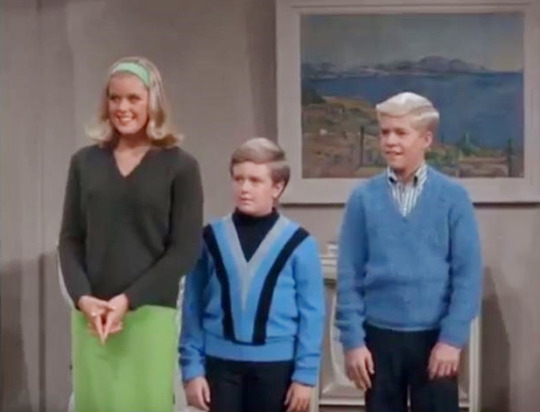
The children of “The Lucy Show,” Ralph Hart (who played Viv Bagley’s son Sherman), Jimmy Garrett (Jerry Carmichael), and Candy Moore (Lucy Carmichael’s daughter Chris) were also on episodes of "My Three Sons.”
Other “Lucy” performers who were on “My Three Sons” include:
Mary Wickes ~ Jeri Schronk (1964)
Doris Singleton ~ Helen & Margaret, 8 episodes (1964-70)
Shirley Mitchell ~ Sally, 2 episodes (1968)
Barbara Pepper ~ Mrs. Brand (1966)
Verna Felton ~ Mub (1962)
Kathleen Freeman ~ Lady Checker (1967)
Jerry Hausner ~ Various Characters, 2 episodes (1964 & 1966)
Reta Shaw ~ Various Characters, 2 episodes (1962 & 1965)
Elvia Allman ~ Maude Prosser (1967)
Eleanor Audley ~ Mrs. Vincent, 9 episodes (1969-70)
Burt Mustin ~ Various Characters, 5 episodes (1962-70)
Olan Soule ~ Various Characters, 5 episodes (1963-70)
Alberto Morin ~ Professor Madoro (1967)
Herb Vigran ~ Caretaker (1967)
Maurice Marsac ~ Various Characters, 3 episodes (1964-72)
Tim Mathewson ~ Various Characters, 3 episodes (1962-63)
Bill Quinn ~ Doctors, 4 episodes (1964-66)
Barbara Perry ~ Mrs. Thompson & Mrs. Hoover, 3 episodes (1964-72)
Nancy Kulp ~ Various Characters, 2 episodes (1962)
George N. Neise ~ Various Characters, 2 episodes (1960 & 1967)
Maxine Semon ~ Various Characters, 2 episodes (1964 & 1967)
Roy Roberts ~Various Characters, 2 episodes (1965 & 1967)
Lou Krugman ~ Various Characters, 2 episodes (1966 & 1967)
Richard Reeves ~ Various Characters, 2 episodes (1962 & 1965)
Dorothy Konrad ~ Various Characters, 2 episodes (1961 & 1962)
Ed Begley ~ Various Characters, 2 episodes (1962 & 1968)
Gail Bonney ~ Various Characters, 2 episodes (1965 & 1970)
Rolfe Sedan ~ Various Characters, 2 episodes (1968 & 1971)
Tyler McVey ~ Various Characters, 2 episodes (1962 & 1967)
J. Pat O’Malley ~ Various Characters, 2 episodes (1963 & 1964)
Paul Picerni ~ Various Characters, 2 episodes (1965 & 1967)
Sandra Gould ~ Various Characters, 2 episodes (1963 & 1964)
Richard Deacon ~ Elderly Man (1960)
Mabel Albertson ~ Mrs. Proctor (1964)
Joan Blondell ~ Harriet Blanchard (1965)
Leon Belasco ~ Professor Lombardi (1966)
Dayton Lummis ~ Dr. Blackwood (1963)
Lurene Tuttle ~ Natalie Corcoran (1968)
Robert Foulk ~ Pop Action (1962)
Dick Patterson ~ Bunny Baxter (1963)
Jamie Farr ~ Itchy (1964)
Larry J. Blake ~ Policeman (1968)
Amzie Strickland ~ Cora Dennis (1968)
Barbara Morrison ~ Mrs. Murdock (1969)
Louis Nicoletti ~ Caddy Master (1962)
Frank Gerstle ~ Policeman (1964)
Gil Perkins ~ Painter (1963)
Tommy Ferrell ~ Mr. Griffith (1964)
Eve McVeagh ~ Clara (1966)
Remo Pisani ~ Pepe (1970)
Dub Taylor ~ Judge (1963)
Frank J. Scannell ~ Emcee (1968)
Ray Kellogg ~ Henshaw (1965)
Romo Vincent ~ Charley (1964)
Stafford Repp ~ Sergeant Perkins (1969)
Jay Novello ~ Vincenzo (1966)
Leoda Richards ~ Restaurant Patron (1966)
CHILD STARS!
Other child stars who appeared on “My Three Sons” included Butch Patrick (“The Munsters”), Jay North (“Dennis the Menace”), Oscar-winner Jodie Foster, Angela Cartwright (“Make Room for Daddy”), Flip Mark (”Lassie”), John Walmsley (”The Waltons”), Tony Dow (“Leave It To Beaver”), Erin Moran (“Happy Days”), Maureen McCormick (”The Brady Bunch”), Ann Jillian (Gypsy), and Heather Menzies (The Sound of Music).

On November 22, 1977, ABC TV (and Dick Clark Productions) brought together a reunion of two of television's favorite sitcoms "The Partridge Family" and "My Three Sons." Hosted by Shirley Jones and Fred MacMurray this would be the only time that the surviving cast members would get together to celebrate the series which included clips, a song from David Cassidy, and an update of what each cast member was doing in 1977.

Also in 1977, some of the stars of the series reunited on a morning program titled "The Early Show", including Stanley Livingston (Chip Douglas), Barry Livingston (Ernie Douglas), Tina Cole (Katie Miller Douglas), and Don Grady (Robbie Douglas).
TRIVIA
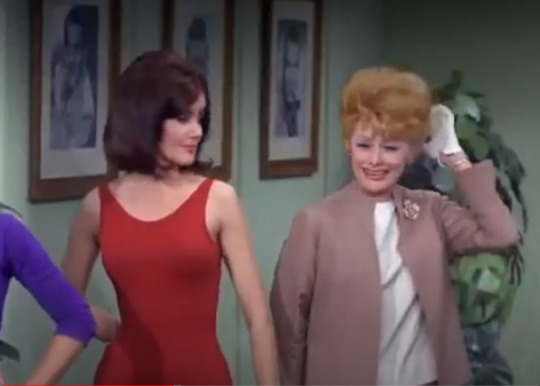
In “Lucy Helps Danny Thomas” (TLS S4;E7) in 1965, there is a large framed photo of Fred MacMurray in the studio hallway. He is joined by other Desilu stars like Jim Nabors (of “Gomer Pyle USMC”), Andy Griffith (of “The Andy Griffith Show”) and Danny Thomas (of “The Danny Thomas Show”).
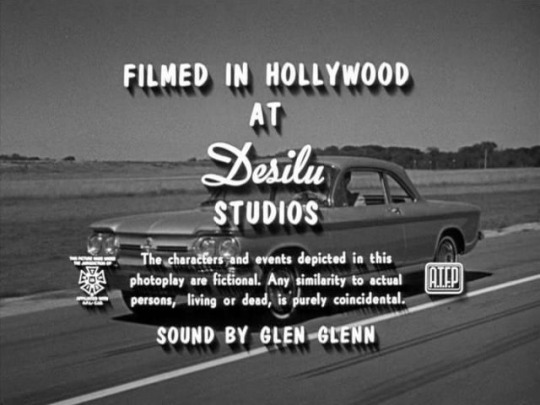
27 notes
·
View notes
Photo

VARIETY GIRL
Paramount, 1947. Directed by George Marshall. Camera: Lionel Lindon. With Mary Hatcher, Olga San Juan, DeForest Kelly, Frank Ferguson, Glen Tryon, Nella Walker, Torben Meyer, Jack Norton, Elaine Riley, Charles Victor, Gus Taute, Harry Hayden, Bing Crosby, Bob Hope, Gary Cooper, Ray Milland, Alan Ladd, Barbara Stanwyck, Paulette Goddard, Dorothy Lamour, Sonny Tufts, William Holden, Joan Caulfield, Lizabeth Scott, Burt Lancaster, Gail Russell, Diana Lynn, Sterling Hayden, Robert Preston, Veronica Lake, John Lund, William Bendix, Barry Fitzgerald, Howard Da Silva, Macdonald Carey, Cass Daley, Patric Knowles, Billy De Wolfe, Mona Freeman, William Demarest, Cecil Kellaway, Virginia Field, Richard Webb, Frank Faylen, Cecil B. DeMille.
2 notes
·
View notes
Text
[OLD]Romantic F/O List
Krieg [Borderlands]
DoomGuy [Doom 2016]
Fl4k [Borderlands 3]
Lilith [Borderlands 3]
Biker [Hotline Miami]
Flagellant [Darkest Dungeon]
Jospeh Seed [Far Cry 5] {ship name: the lion & the lamb}
Jane Doe/Soldier [TF2]
Tavish Finnegan DeGroot/Demoman [TF2]
Nero [Devil May Cry]
Ashley "Ash" Joanna Williams [The Evil Dead Franchise] {ship name: my hero}
A. Traveler [The Twilight Zone 2019]
Gabriel [Good Omens 2019]
The Wishmaster/Nathaniel Demarest [Wishmaster 1997] {ship name: make a wish}
Bill [Body Bags 1993] {ship name: kills and kisses}
Coach Bobby Finstock [Teen Wolf] {ship name: catch these kisses}
Frank [Subway Surfers]
Maleficent & Diaval [Maleficent]
Borra [Maleficent]
Paul [The Lost Boy's 1987]
Jester [The Jester]
The Dealer [The Outer Darkness]
Smiling Jack [VTMB] {ship name: sucker for your love}
Beckett [VTMB] {ship name: puppy love}
Caine/Taxi Driver/Cabbie [VTMB] {ship name: every king needs a queen}
Nines Rodriguez [VTMB] {ship name: lovebites}
Morpheus/The Sandman/Dream [DC] {ship name: bring me a dream}
Harley Quinn [DC]
John Doe/The Joker [DC]
Lobo [DC] {ship name: baby blues}
Spawn [Marvel]
Neena Thurman/Domino [Marvel] {ship name: lucky charm}
Johnny Blaze/Zarathos/Ghost Rider [Marvel] {ship name: burning love}
Sam Wilson/The Falcon/Captian America [Marvel]
Nick Fury [Marvel]
Raizo Kodo [Marvel]
Doreen Allene Green/Squirrel Girl [Marvel]
Ben Daimio [Hellboy Franchise]
Kung Lao [MK]
Shang Tsung [MK]
Johnny Cage [MK]
Kuai Liang/Sub-Zero [MK]
Raiden [MK]
Grey Cloud/Nightwolf [MK]
Frost [MK]
Baraka [MK]
Havik [MK]
Auron [FFX]
Dr. Facilier [The Princess And The Frog 2007]
Vincenzo "Vinny" Santorini [Atlantis: The Lost Empire 2001]
Captain Joseph Korso [Titan A.E. 2000]
Long John Silver [Treasure Planet 2002]
General Grawl [Planet 51 2009]
Piston Hondo [Punch Out]
Unsure/Crushes
Chucky/Charles Lee Ray [Chucky Franchise]
Ash Rivers [VTMB]
Barabus [VTMB]
Dale Talley [VTMB 2]
Samuel [VTMB 2]
Jennifer Susan Walters/She-Hulk [Marvel]
Axton [Borderlands]
3 notes
·
View notes
Text
2019 Reading List
So I've decided to read at least 12 traditionally published books this year and hey whadda you know, I have 11 recently purchased books on a shelf waiting for me. So here is my reading list for this year, hopefully:
-The Odyssey by Homer trans. Emily Wilson
-The Witch Doesn’t Burn in This one by Amanda Lovelace
-Norse Mythology by Neil Gaiman
-The Silk Roads: A New History of the World by Peter Frankopan
-The Lay of Aotrou and Itroun by J.R.R. Tolkein
-The Popol Vuh: The Mayan Book of the Dawn of Life
-Ancient Maya by Arthur Demarest
-The Diary of a Young Girl by Anne Frank
-Liar, Temptress, Soldier, Spy: Four Women Undercover in the Civil War by Karen Abbott
-Labyrinth Lost by Zoraida Cordova
-Ninefox Gambit by Yoon Ha Lee
4 notes
·
View notes
Text

The most recent episode of "Crossroads of Rockland History" is now in the archive. The episode aired Monday, January 21 on WRCR. Author and New City native Frank Eberling was interviewed. He previewed his new murder mystery “Low Tor” which takes place in Rockland County.
Frank Eberling is a fifth-generation New City resident who moved to Florida upon graduation from Clarkstown High School in 1964. He has been a documentary filmmaker for more than forty years. His earlier novel "Demarest Kill" was a local favorite as well.
Listen to the podcast (28 min)
To learn more about Eberling’s Demarest Kill, click here:
Crossroads of Rockland History, a program of the Historical Society of Rockland County, airs on the third Monday of each month at 9:30 am, right after the Steve and Jeff morning show, on WRCR radio at www.WRCR.com. Join host Clare Sheridan as we explore, celebrate, and learn about our local history, with different topics and guest speakers every month.
For an sound file archive of past programs, visit :
#rockland history#local history#rockland county#nyshistory#Frank Eberling#murder mystery#novel#new city#low tor
1 note
·
View note
Text
10 Political Films To Help You Through 2020

With a pandemic, political unrest and a contentious presidential election that might not be absolutely determined for days if not longer, maybe you want some escape. Here’s a record of the ten finest Hollywood movies about politics.
Again in 2016, on the eve of the final presidential election, TCM host Ben Mankiewicz spoke with me for my Cinema Junkie Podcast concerning the political movies the cable channel was airing. I believed it was becoming to revisit a few of these movies this election 12 months for each escape and commentary about American politics.
Mankiewicz will get to faucet into extra than simply his film experience in discussing these movies. His household ties make him the proper individual to have a look at the convergence of Hollywood and politics since his grandfather, Herman J. Mankiewicz, wrote “Citizen Kane”; his great-uncle, Joe Mankiewicz, wrote and directed “All About Eve”; and his father, Frank Mankiewicz, was Robert Kennedy’s press secretary.

Listed below are the movies we mentioned that stay related and insightful.
“The Final Hurrah” (1958)
John Ford’s portrait of an old style politician in an unnamed (however doubtless meant to be Boston) metropolis. Spencer Tracy performs the incumbent mayor working for re-election. The movie is multi-layered and complicated as a result of Tracy makes Frank Skeffington heat and likable but the movie doesn’t draw back from the corruption that helps get him elected.
“The Candidate” (1972)
Michael Ritchie’s scathing political satire seems to an idealistic, Kennedy-like character, Invoice McKay (Robert Redford), who’s requested to run for U.S. Senate towards an incumbent conservative candidate that’s assured victory. He is instructed he can do no matter he needs as a result of there isn’t a means he can win. However politics has a means of corrupting even one of the best individual and the movie nonetheless resonates in its criticism of the political course of and the function of promoting and the media. Redford provides one among his finest performances and the movie feels virtually like a documentary at occasions. Though from at the moment’s vantage level it feels extra hopeful than I feel most individuals now might really feel about politics.
“The Nice McGinty” (1940)
Cynicism about politics is nothing new. Even again in 1940, when America was about to enter World Conflict II and confidence in management was robust, writer-director Preston Sturges crafted this savage comedy concerning the corruption on the coronary heart of American politics. The movie has an excellent solid and rapid-fire dialogue. My favourite line could also be from William Demarest: “If it wasn’t for graft, you’d get a really low kind of individuals in politics, males with out ambition, jellyfish!” Sure, regardless of all of the cynicism, Sturges does preserve a slim religion within the humanity of his essential character.

“Fail Protected” (1964)
Sidney Lumet’s bleak story of unintentional nuclear conflict and a president who has to cope with the scenario offers Mankiewicz along with his favourite onscreen president in Henry Fonda. The movie is claustrophobic and tense and permits us to contemplate what we might need in a frontrunner at a time of disaster. Simply take into account Fonda’s dealing with of potential nuclear holocaust and take into consideration how our present president would possibly behave. Simply meals for thought and you can pair this with the documentary “#UNFIT” for a dose of actuality.

“Dr. Strangelove: Or How I Realized to Cease Worrying and Love the Bomb” (1964)
Mankiewicz suggests “Fail Protected” and “Dr. Strangelove” for a double invoice since each movies got here out in 1964 and each cope with potential nuclear conflict however in radically other ways. “Fail Protected” was somber and severe whereas “Dr. Strangelove” approaches the identical themes via farce and satire. Stanley Kubrick’s movie stays as potent at the moment because it was in 1964 and captures the absurdity of politics, conflict, and the capability of individuals to only be silly. This movie is sheer perfection from the black and white images to the pitch-perfect casting (particularly noteworthy are George C. Scott, Peter Sellers in three roles, and Sterling Hayden).

My further picks for this presidential election:
“Bob Roberts” (1992)
Simply watched this movie once more and it proves surprisingly correct in predicting some issues concerning the present political panorama. Tim Robbins writes, stars, and directs this satire on a right-wing people singer who runs for U.S. Senate towards a liberal, long-time incumbent (performed to perfection by Gore Vidal). Roberts is comfortable to make use of smear techniques, soiled tips, and anything he can muster to win. His crazed and devoted fan base might strike some as prescient in predicting a few of Trump’s core supporters. This movie appeared absurd in 1992 and now it looks like it didn’t go far sufficient in predicting the place politics can be within the new millennium. Search for a bunch of cameos in small supporting roles.

“Idiocracy” (2006)
Mike Choose of “Beavis and Butthead” fame crafted this ridiculous comedy that now would not appear that absurd. It is primarily concerning the dumbing down of America and typically you snigger and you then understand there are some unhappy truths within the comedy.
“Tanner ’88” (1988)
Robert Altman’s mini-series provides a behind-the-scenes have a look at a former U.S. consultant’s marketing campaign as he vies for his get together’s presidential nomination. Altman had his star, Michael Murphy, work together with actual politicians as he hit the marketing campaign path in what was virtually like an actual marketing campaign. Altman mixes cynicism with occasional moments of hope in addition to real insights into fashionable politics.

“Election” (1999)
Though not about politics as we usually consider it, Alexander Payne’s comedian have a look at a highschool election offers a painfully humorous have a look at a few of the worst qualities human beings can show. The laughs come at a brutal price however this movie is simply so wickedly good. Reese Witherspoon has by no means been higher than because the ruthlessly formidable Tracy Flick and Matthew Broderick is pathetically hilarious because the well-intentioned however woefully mismatched nemesis to Flick. Once more, one other movie dripping with cynicism.

“Mr. Smith Goes To Washington” (1939)
I didn’t need to depart you with all doom and gloom and lack of religion in your fellow man, so be certain to additionally embrace Frank Capra’s comedy-drama a couple of wide-eyed junior senator (the great James Stewart) coming into battle with the actual world of Washington, DC politics. Jean Arthur shines as his weary, jaded and wisecracking secretary. Capra isn’t blind to the evils of the world however he maintains that goodness and morality will triumph. He believes America is actually an important nation and the values it’s based on are inspirational and value remembering. Do your self a favor and watch this to uplift your spirits.

And a bonus, non-American decide is “Thick of It” and its characteristic movie companion “Within the Loop.” Armando Iannucci’s completely stellar and hilarious have a look at British politics. Watch is just for Peter Capaldi’s Malcolm Tucker, a person who can use obscenity like nobody else and who can tear folks down with only a few alternative phrases. One character says of Malcolm: “Yeah. I do not know which is worse, watching him slowly rumble in direction of you want a prostate most cancers or him showing all of the sudden out of nowhere like a extreme stroke.” Genius.
FEATURED PODCAST

KPBS’ day by day information podcast masking native politics, schooling, well being, setting, the border and extra. New episodes are prepared weekday mornings so you may pay attention in your morning commute.

Beth Accomando Arts & Tradition Reporter


I cowl arts and tradition, from Comedian-Con to opera, from pop leisure to tremendous artwork, from zombies to Shakespeare. I’m all in favour of going behind the scenes to discover the artistic course of; seeing how popular culture displays social points; and offering a context for artwork and leisure.
To view PDF paperwork, Download Acrobat Reader.
Source link
from Diaspora9ja https://diaspora9ja.com/10-political-films-to-help-you-through-2020/?utm_source=rss&utm_medium=rss&utm_campaign=10-political-films-to-help-you-through-2020
0 notes